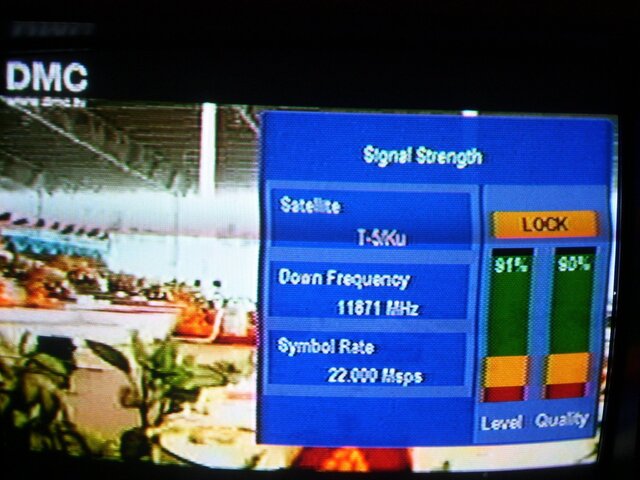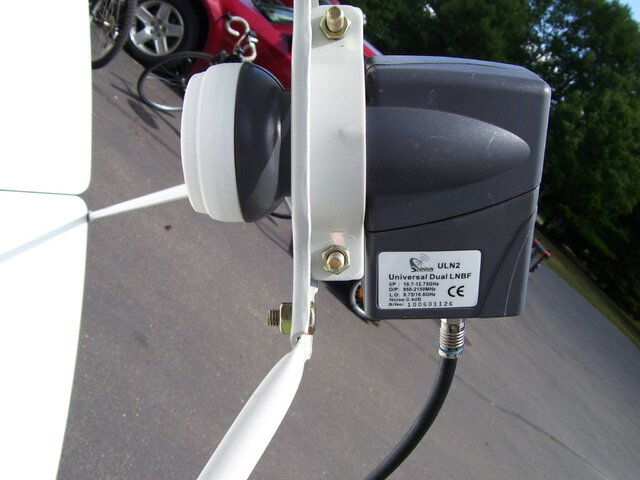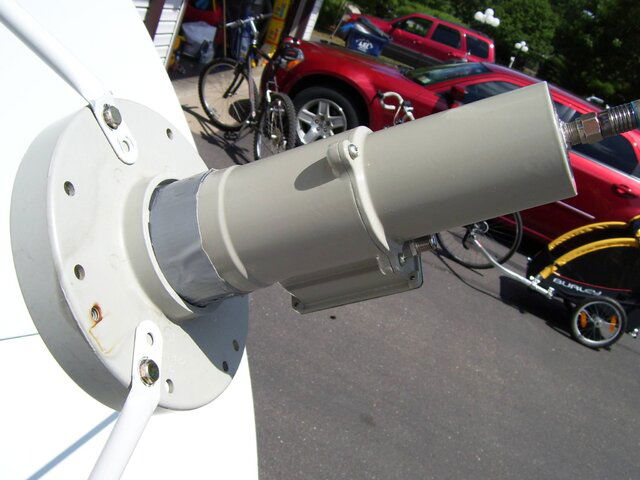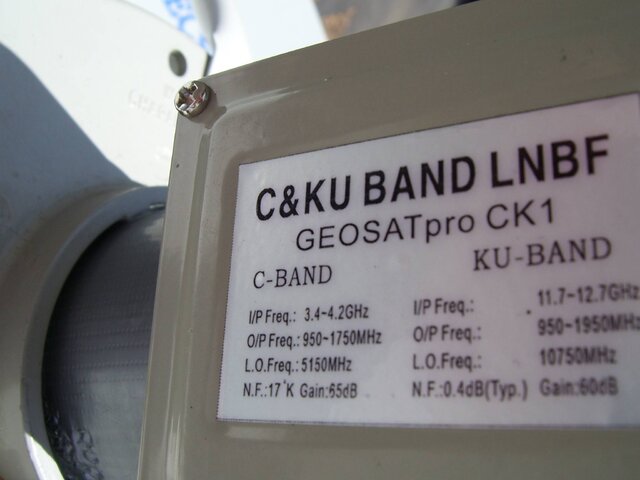OK just got done with the testing and the results you might like

Tried 3 different LNB's
-Geosatpro SL1P Prime Focus .6 KU LNB
-Sadoun dual Universal .4 LNB used for offset dishes
-GeoSatPro C/K1 C/KU Band LNB for Prime Focus dishes .4 KU side
Hooked up the SL1P and got 97W dialed in. Peaked for optimum quality and blind scanned. Took results from various transponders including the one you want (11871 for DMC)
Got done and unhooked LNB and put a Sadoun dual Universal LNB in its place. Since this is designed for offset dishes I figured the quality would go down.
Last was the GeoSatPro C/K1 which is both C-Band and KU Band.
All were on the Fortec 6 foot dish and Pansat 1500 which has a "true" (and spazzy) meter. normal rule of thumb is 30 quality would be threshold. I'm in Minneapolis, MN
SL1P results
quality/transponder/channel
90 11871 DMC
99 11777 PIT
95 11966 WORD
90 12055 AFRICA TV
99 12122 ALJAZEERA ENGLISH
91 11833 DAYSTAR
80 12050 PRESS TV
88 12115 PASTOR SCOTT
75 12177 TELECULTURE
99 12152 RUSSIA TODAY
One thing I noticed is the quality was rock solid. Normally the Pansat would jump like 60/75/68/74/63 etc....the only one that jumped was Word which would jump between 92 & 99 all the time
Results with the Sadoun dual
quality/transponder/channel
74 11871 DMC
99 11777 PIT
83 11966 WORD
75 12055 AFRICA TV
90 12122 ALJAZEERA ENGLISH
76 11833 DAYSTAR
74 12050 PRESS TV
66 12115 PASTOR SCOTT
60 12177 TELECULTURE
90 12152 RUSSIA TODAY
Some transponders only dropped a smidge but some dropped like a rock. Also the meter was back to its spazzy self. I took the "Common" number of quality. Doc Scott was at 66 but would spike to 72-73 then right back to 66-67 for 3 or 4 seconds.
The C/K1 had some really wacky results. Maybe it wasnt skewed 100% correctly but meter very spazmastic
quality/transponder/channel
60 11871 DMC
90 11777 PIT
45 11966 WORD
75 12055 AFRICA TV
90 12122 ALJAZEERA ENGLISH
90 11833 DAYSTAR
60 12050 PRESS TV
72 12115 PASTOR SCOTT
74 12177 TELECULTURE
50 12152 RUSSIA TODAY
some pics of the LNB's and specs of the LNB's and a screengrab of DMC with the Prime Focus LNB
I noticed the Prime Focus LNB the meter was rock solid. That 90 on DMC never went below 89 and maxed at 96/97. SO you should be good. It was pushed all the way back in the holder away from the dish. I did get the LNB pushed in about 1/2" towards the LNB and the quality stayed the same. If I pushed it all the way in then the quality went kaput (down to 45 or so)














